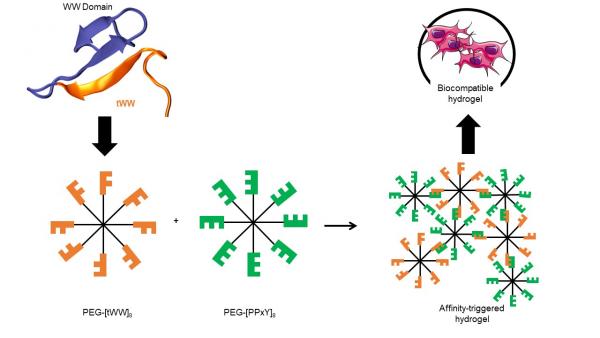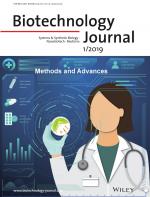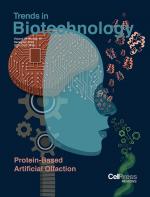New publication about affinity-triggered hydrogels
Our last publication from Cláudia Fernandes, Ana Pina, Arménio Barbosa, Inês Padrão, Margarida Dias and Cecília Roque, together with collaborators from LAQV - FCT NOVA, LEAF from ISA and Department of Bioengineering and iBB – Institute for Bioengineering and Biosciences from IST, was published in Biotechnology Journal.
We developed a material based on the designed affinity pair that is biocompatible and easily produced by chemical synthesis. In this paper we explored the material specifically for tissue engineering applications but, depending on the affinity pairs, this is a promising tool to generate functional materials that can be further tuned for different bioengineering applications.
Affinity-triggered hydrogels materials assembled due to the interaction between two components displaying affinity to each other. These two components compose an affinity pair that can be viewed as two puzzle pieces. In this study, the puzzle pieces are a smaller version of the protein called WW and its respective target peptide. Both were functionalized in PEG molecules and the assembly of these components is only possible due to their molecular recognition, like the perfect match of puzzle pieces.
The novelty of these hydrogels is the affinity pair, which was previously developed by our research team. The results of this paper led us to conclude that both peptides can interact with each other in a stable way and we have shown for the first time that minimal mimetic versions of protein domains can be used to yield affinity-triggered assemblies with mechanical properties comparable to when using the full protein.
Read the full story of our paper here.
Fernandes, C, Pina AS, Barbosa AJM, Padrão I, Duarte F, Andreia C, Teixeira S, Alves V, Gomes P, Fernandes TG, Dias AMGC, Roque ACA. 2019. Affinity‐triggered assemblies based on a designed peptide‐peptide affinity pair. Biotechnology Journal https://doi.org/10.1002/biot.201800559








